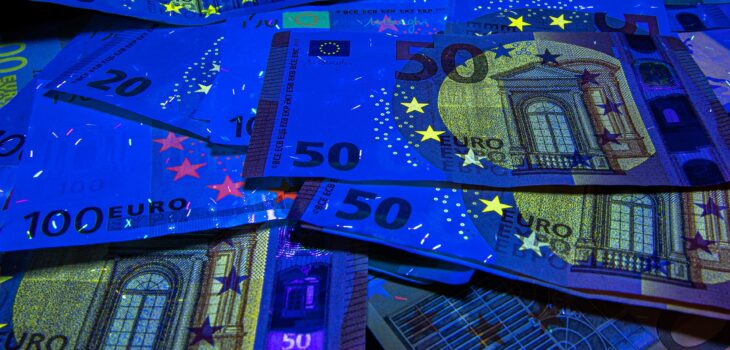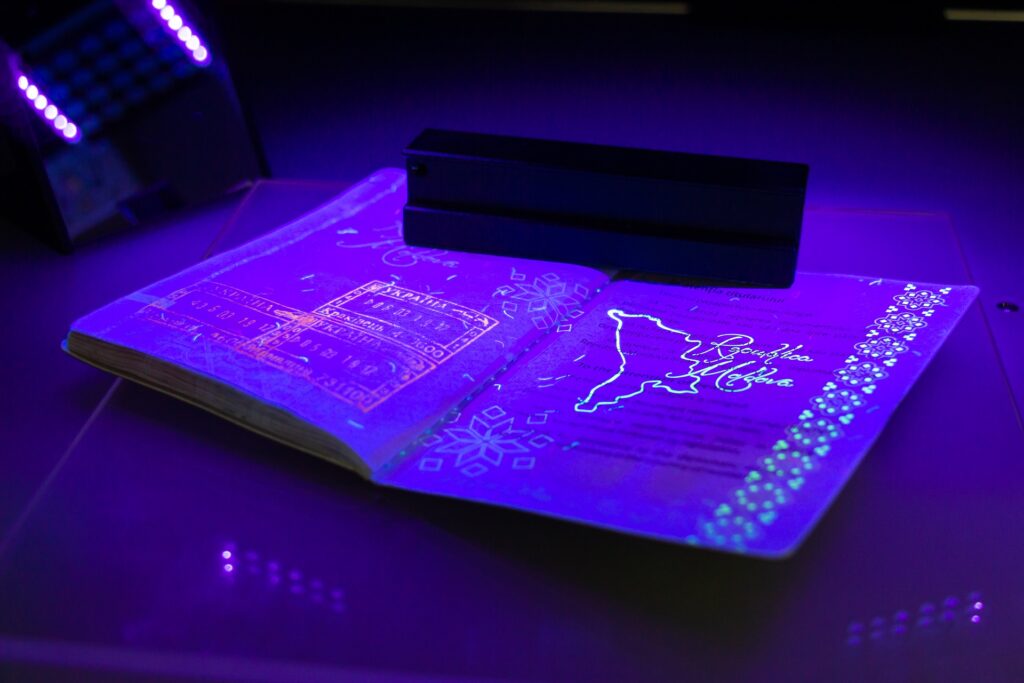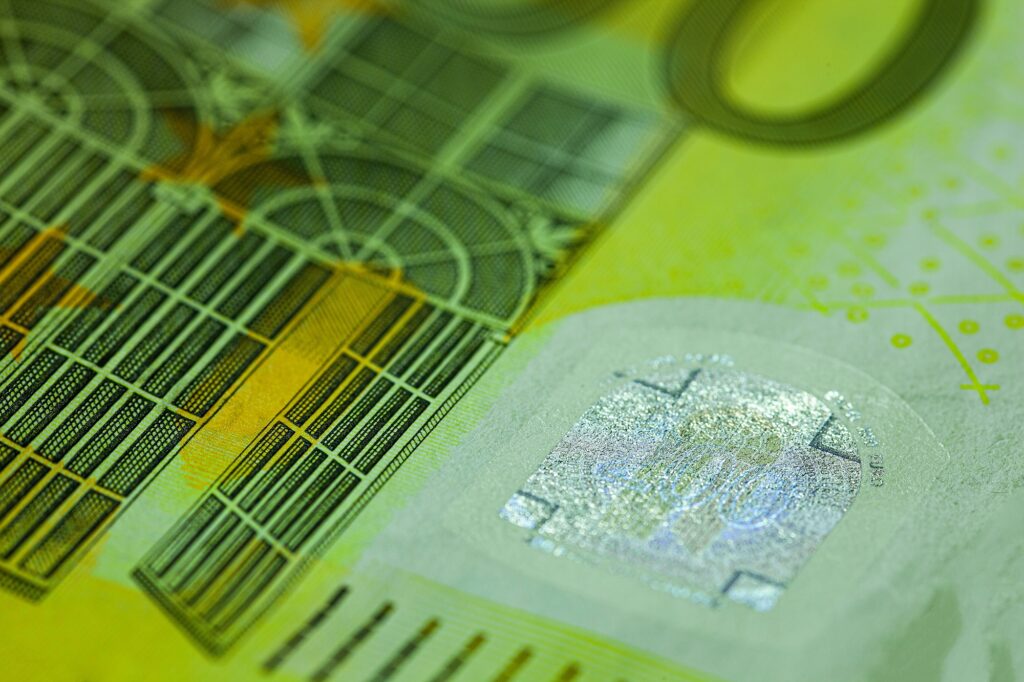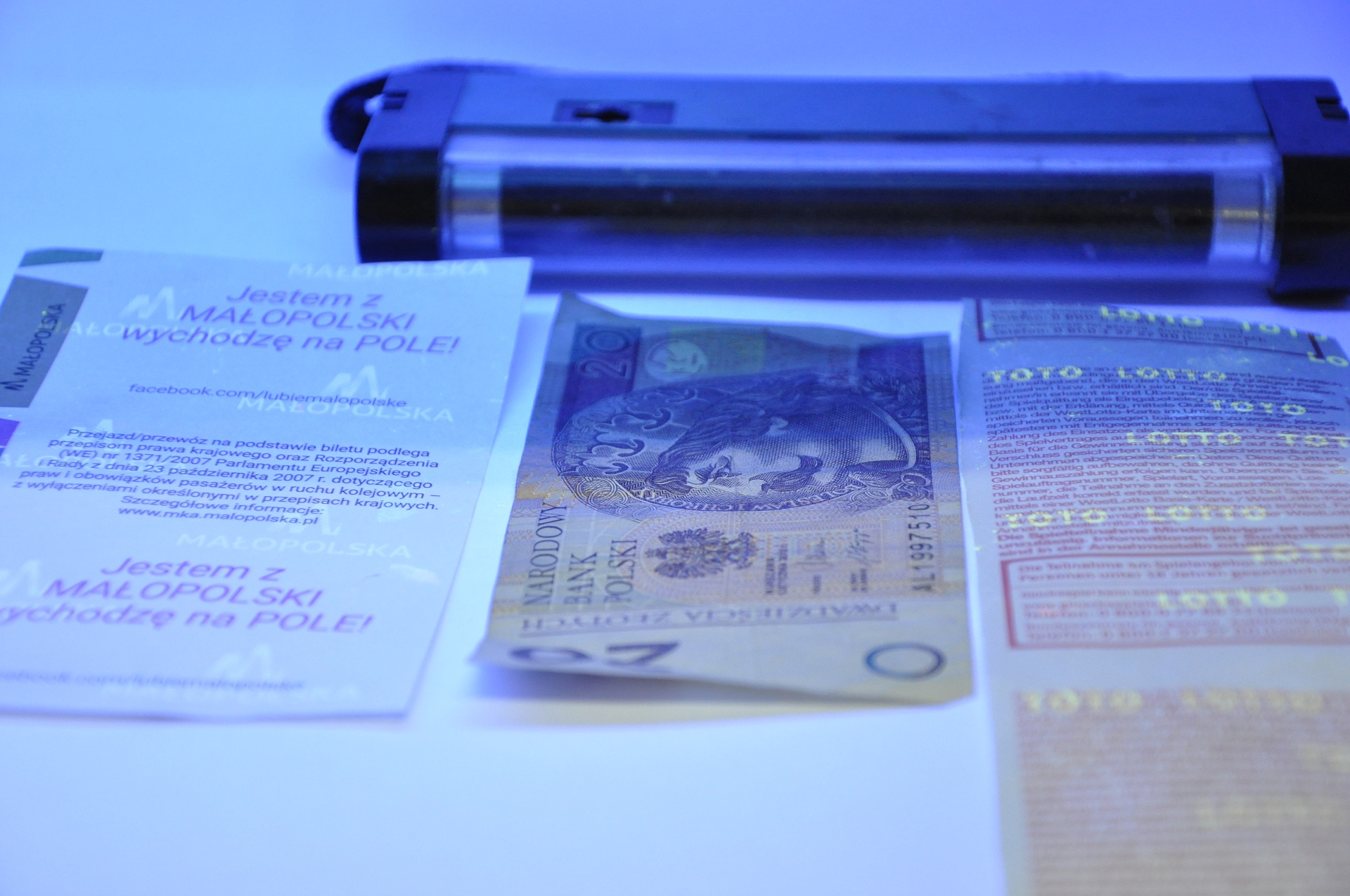Special inks for protection of securities against counterfeit. Part 1


A long time ago, a highly qualified specialist at securities’ protection told me that the essence to protecting prints against counterfeit and forgery lies in a well prepared design of such a document, not a special ink nor security paper. These are just tools, which a designer, equipped with knowledge of their properties, can use to create a work which is better or worse protected against counterfeit or forgery, depending on the needs.
There are many categories of special inks and varnishes used in protecting documents against counterfeiters. These can be inks and varnishes which quarantee a high degree of protection as well as ones whose security level is relatively easy to recreate.
Of course, a good designer, using special inks and varnishes, can use various tools and techniques which will enable him achieve an effect almost impossible to reproduce by a counterfeiter. Since I am not a specialist at securing documents against forgery, let alone a designer of such works, in this article I will focus on what I know best – special inks and varnishes which make a perfect work tool for security professionals.
Special inks and varnishes used for securing documents against forgery can be divided into various types, categories and groups, e.g. the ones which are easily detected by a bare human eye, or the ones which cannot be seen without the use of highly specialised devises, as well as the ones which can be seen only in certain specific conditions, felt to the touch, seen or felt when treated with water or other substance.
Inks which use the phenomenon of luminescence belong to the group of special inks most commonly used in securities. The luminescence, to put it simply, is a phenomenon of glowing of certain bodies or substances caused by any factor except the temperature increase.
The most basic inks which use this phenomenon are fluorescent inks, which are divided into visible in daylight and almost completely transparent. Both convert UV light into a visible light in realtime (immediately after the exciting factor, in this case UV light, goes out, the glowing halts). To put it straight: they „glow” under UV light, more precisely – in UV-A light spectrum (wavelength: 315-380 nm).



Fluorescent inks visible in daylight are the ones which are simply coloured in the usual sense of the word. Observed in daylight, they are characterised by their pure, bright, „neon” colour, almost glaring to the eyes, and under UV light they glow with an additional, bright glow
Available colours of fluorescent inks are colours from the Pantone guide, well-known to the printers, with standard numbers from 801 to 807 and additional colours from 808 to 814. Several years ago Pantone added variations of these colours to that range, obtaining 56 additional fluorescent shades and gathering them all in Pantone Pastels & Neons colour guide.
The second group of fluorescent inks are almost completely transparent inks. However, these usually have almost invisible „residual” colour or a milkiness of the mass, almost imperceptibly „covering” the print below.
Apart from that, they reflect light like a varnish. If we use a glossy binder, they are glossy, and if the binder is matte, they reflect light in a dispersed way. All that makes it possible to see them with a naked eye, using certain ways to observe. Here steps in a specialist-security designer, who uses ways and tricks known to themself to „hide” the ink on a design to make it de facto invisible.
Invisible fluorescent inks, similarly to visible ones, glow under UV light, which is why the person checking the document, equipped with the right tools, can relatively easily detect the area and method of use of the ink, and thus – check the authenticity of the work.
In printing documents with high degree of security, invisible fluorescent inks, „glowing” in various UV light ranges (also UV-B and UV-C) or the ones which can glow in one range, as well as in second, and even third range are also used. Available colours visible under UV are standard yellow, green, blue, white, orange, pink, purple, and, used for the highest class of security, red.


The original article can be found in periodical Świat DRUKU, issue 3/2022



